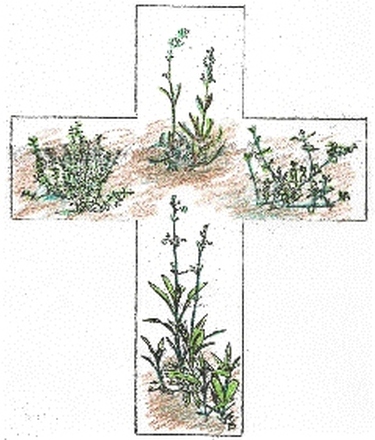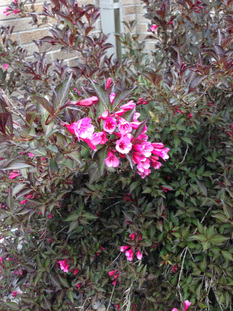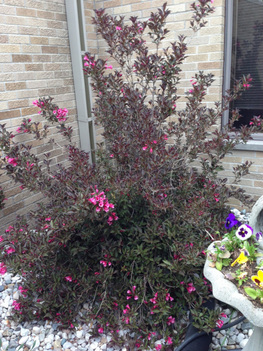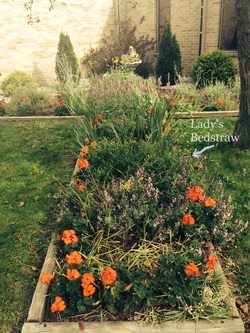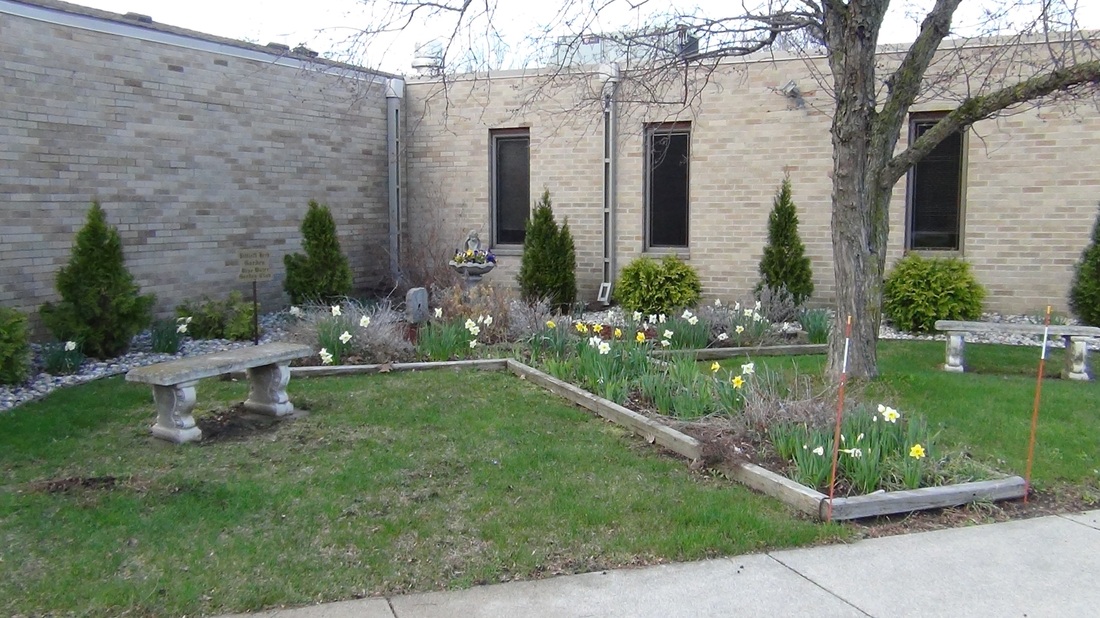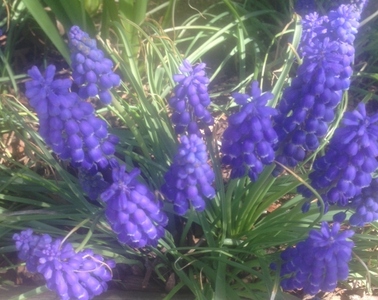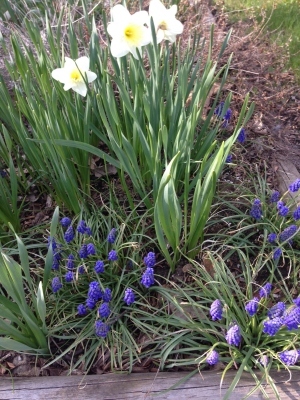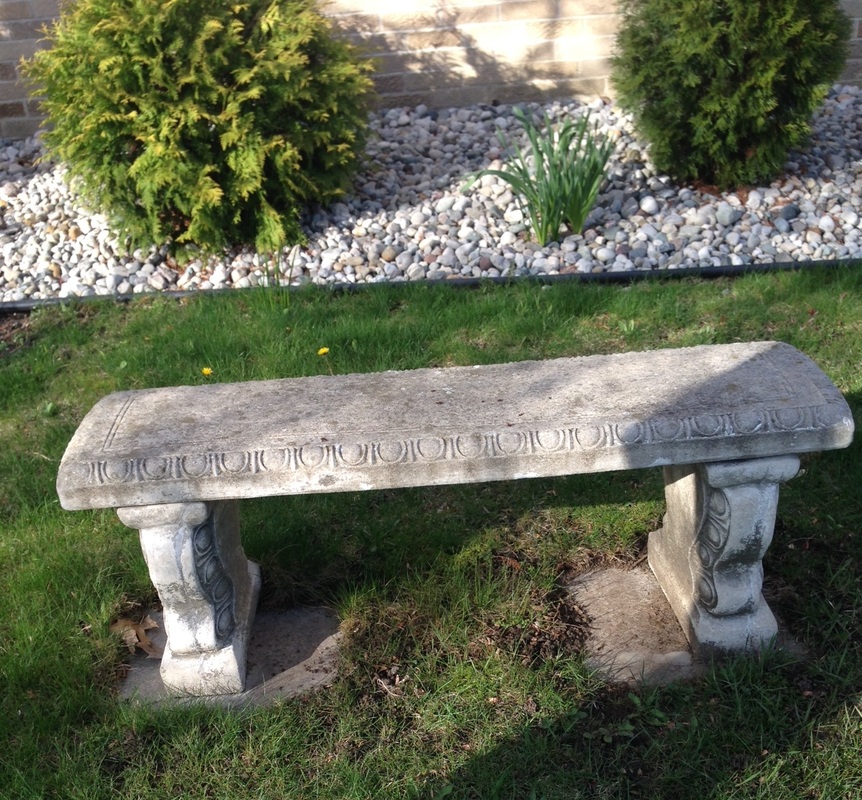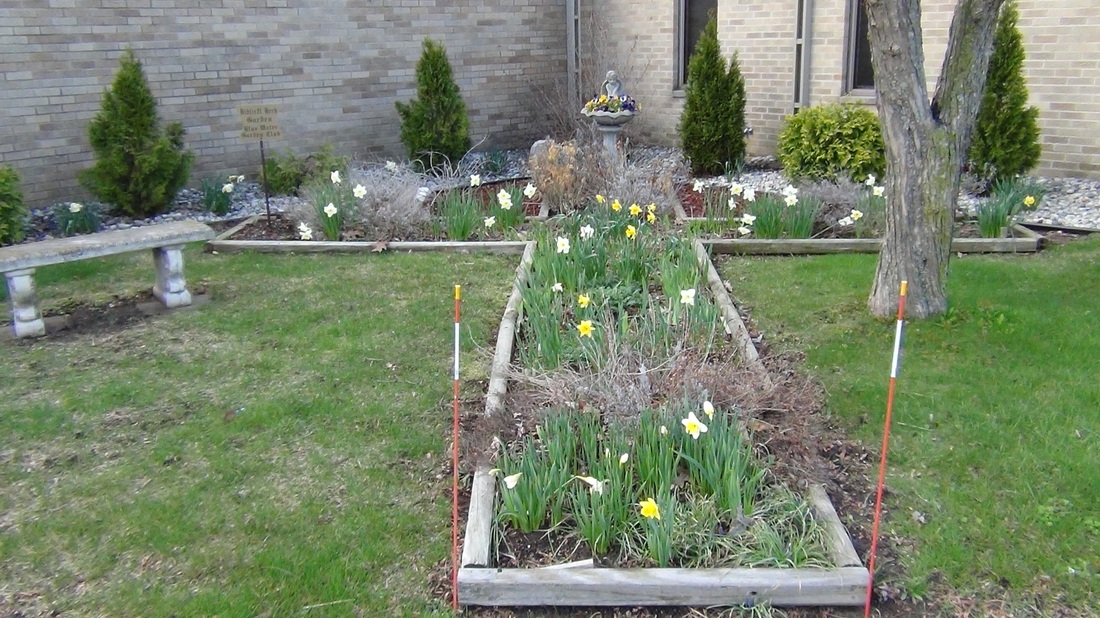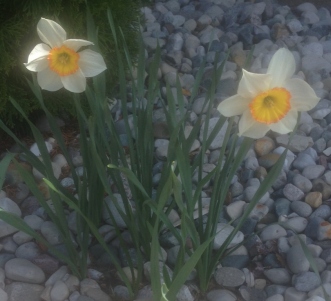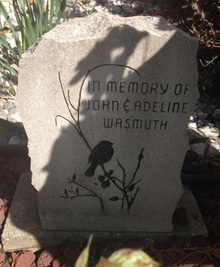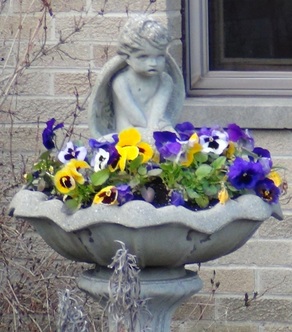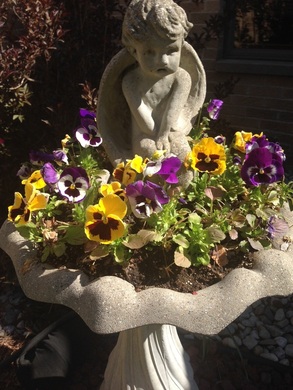Featured Article

The Biblical Herb Garden
of St. Paul Lutheran Church |
Article is available for download.
| ||
|
Symbolic Biblical Herb Garden
And God said, Let the earth bring forth grass, the herb yeilding seed, and the fruit tree yielding fruit after his kind, whose seed is in itself, upon the earth: and it was so. And the earth brought forth grass, and herb yeilding seed after his kind, and the tree yielding fruit, whose seed was in itself, after his kind and God saw that it was good. Genesis 1:11-12 (KJV) The story of the Bible begins and ends in a garden and it is not surprising to find in these books much mention of many herbs as food and medicine. “God, the Creator of Heaven and Earth, at the beginning when he created Adam, inspired him with the knowledge of all natural things...so he had also the knowledge, both what herbs and fruits were fit, either for meat or medicine for use or for delight”. Paradisi in Sole – John Parkinson 1629. |
More than 125 plants, trees, and herbs are mentioned in scripture.
The northern climate of Michigan presents a challenge in planting a Biblical Herb Garden. Many shrubs, plants, trees native to the Holy Land are tender and won't survive our northern winters.
~~~~~~~~~~~~~~~~~~~~~~~~~~~~~~~~~~~~~~~~~~~~~~~~~~~~~~~~~~~~~~~~~~~~~~~~~~~~~~~~~~~~~~~
~~~~~~~~~~~~~~~~~~~~~~~~~~~~~~~~~~~~~~~~~~~~~~~~~~~~~~~~~~~~~~~~~~~~~~~~~~~~~~~~~~~~~~~
Spring Iris - 2014 |
Symbolic flowering plants used for color of blossoms:
|
|
Weigela is a spring-blooming shrub originally from East Asia. It is deciduous in nature. The plant is named after the German Scientist, Christian Ehrenfried Weigel.
It is common to prune weigela in order to keep them a certain size. They can be trimmed to a certain shape. Branches can be cut back by 1/3 each season to control size and cut back to a point where 2 branches meet. Hand pruning is best! For rejuvenation, remove old wood every few years...trim out branches 1 1/2 inches thick or bigger from their base on the plant. Butterflies and Hummingbirds are big fans of the flowers! The leaves remain and attractive mix of burgundy, black, green, yellow or white long after the blossoms have faded. |
Specimens from the Biblical Herb Garden.Lady's Bedstraw |
Plants Mentioned in the Bible -
Many of these are in our Herb Garden Anemone – Thought to be the “Lilies of the field” - Luke 12:27-28 (*read more below*) Calendula – Mary's Gold, in bloom in the Holy Land on each of her holy days and festivals. Fitches – Nigella – Isaiah 28:25 (KJV) Hyssop – Not the plant mentioned in the Old Testament which was probably a form of Oregano, Origanum Maru, but used here symbolically. 1 Kings 4:33 Lady's Mantle – Alchemilla Vulgaris. The fan shaped leaf resembles Our Lady's Cloak. Lady's Bedstraw – Galium Verum – a manger herb used for bedding. Mugwort – Artemisia Vulgaris – once the Herb of St. John the Baptist, who is believed to have worn a girdle of it in the wilderness. Rue – Ruta Graveolens – Luke 11:42 Sage – Symbol of Immortality and wisdom – Exodus 37:17-18 The seven branched Jewish candlestick may have been designed from the inflorescence of this plant. It has been said Moses saw this plant in the wilderness and had the candlesticks made for his tabernacle. Star of Bethlehem – Orinthogalum – II Kings 6:25 Sweet Woodruff – Galium Odoratum – used to store church linens. The plant of Whitsunday because it blooms at the season of the year. Thyme – The odor is a symbol of ageless sweetness. Song of Solomon 6:2 Wormwood – Artemisia Absinthium – symbol of bitter suffering. Rev. 8:11 |
|
There are other suggested flowers that could be the “Lilies of the Field”.
|
Medicinal and Dye Plants found in Monastery Gardens
Agrimony Betony Crocus Daisy - Symbol of the Christ Child Flag Horehound Lavender Pennyroyal (Mint) Rosemary Teucrium Germander Winter Savory Yarrowwood - Artemisia Absinthium - symbol of bitter suffering. Rev. 8:11 |
The Cross Garden Border with Spring Flowers in Bloom - 2014
|
For times of prayer and meditation,
the bench is a wonderful place to find tranquility. |
Galium -
Bedstraw is placed at the base of the cross A garden stone was later placed in memory of John & Adeline Wasmuth by their daughter. Adeline enjoyed spending time here.
The flowers in the angel birdbath change throughout the summer.
|
Original Garden Sketch and Plantings
The Biblical Herb Garden was dedicated on June 30, 1985
at St. Paul Lutheran Church
Beloved Pastor Bill Eisenmann's favorite flower was added to the new garden, the white Stargazer Lily, but unfortunately it did not survive.
The Biblical Herb Garden is designed, planted, and maintained by the Blue Water Garden Club of Port Huron, Michigan
1985 Co-ordinating Committee:
Shirley White – President, Blue Water Garden Club
Joan Fleming – Project Chairperson
Beverly Fead – Resource Person and herbarist
Joan Thomas
Jinny Sheldon
Mary Brooks
Most of the plants and research development came from a local gardener who at the time lived on River Road in Port Huron. This was of course before the advent of the internet and therefore, books and local discussion were used as deciding factors. The garden has been a beautiful fixture of St. Paul for 29 years. We appreciate the work and dedication of the original committee and those who continue to care for it.
**The Garden has changed a little throughout the years and is still lovingly cared for by Joan Fleming and our volunteer members. Joan welcomes anyone who is interested in watering, weeding, and clipping grass throughout the season, there is a signup sheet for two week intervals in the Narthex.
**Thank you Joan Fleming and Diane Merkau for supplying information used in this feature article.
The Biblical Herb Garden is designed, planted, and maintained by the Blue Water Garden Club of Port Huron, Michigan
1985 Co-ordinating Committee:
Shirley White – President, Blue Water Garden Club
Joan Fleming – Project Chairperson
Beverly Fead – Resource Person and herbarist
Joan Thomas
Jinny Sheldon
Mary Brooks
Most of the plants and research development came from a local gardener who at the time lived on River Road in Port Huron. This was of course before the advent of the internet and therefore, books and local discussion were used as deciding factors. The garden has been a beautiful fixture of St. Paul for 29 years. We appreciate the work and dedication of the original committee and those who continue to care for it.
**The Garden has changed a little throughout the years and is still lovingly cared for by Joan Fleming and our volunteer members. Joan welcomes anyone who is interested in watering, weeding, and clipping grass throughout the season, there is a signup sheet for two week intervals in the Narthex.
**Thank you Joan Fleming and Diane Merkau for supplying information used in this feature article.

